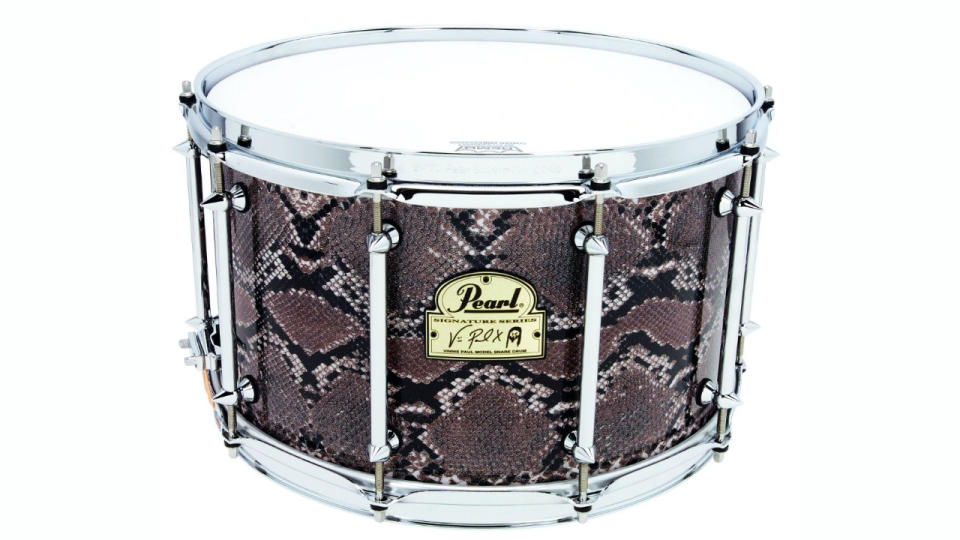YouTuber recreates Paramore’s iconic Misery Business snare drum sound from scratch without using samples, "Drum production was not the same post-Misery Business"

Ask 100 drummers what their favourite snare drum sound is, and you’ll likely get at least 200 different answers. To many drummers, one album, and in particular one song from the post-millenium era will always be held up as having one of the finest recorded snare sounds of all time, and it’s Paramore’s 2007 hit, Misery Business from their album, Riot!
Drummer Zac Farro famously used a whopping 14”x8” Pearl Vinnie Paul signature model snare drum on the song (engineered by Dan Korneff), which has a distinctively huge snare drum sound to match. However, the snare drum itself is only part of the story.
A crucial reason that the original recording’s drum sound is so difficult to replicate is that producer/mixer David Bendeth bolstered the live snare with multiple samples and heavy processing. “I guess we’ve been known to add up to maybe 7 or 8 different snare drums for different things” David Bendeth said of his approach on his YouTube channel in 2014.
“Sometimes it’s a very short sample where you hit the drum, and it’s just the hit, not the actual decay of the snare drum. Then you mix them together and you try and create something special. It’s a sound I’ve developed over the last six or 7 years.”
The result is a massive, almost ’80s-inspired powerful snare sound that contains all the ingredients we love simultaneously. It explodes out of the speakers with attack, followed by a thick-bodied punch, a perfectly controlled overtone and a huge sustain from room sounds, reverbs and samples.
In fact, so big was the impact of Farro, Korneff and Bendeth’s creation, it went on to re-shape the way drums were styled in modern punk, rock and even metal genres for years, as bands and producers went looking for the perfect blend of beef, cut and body. In 2023, Hardcore Music Studio polled 1,800 producers about their favourite snare sound, with Misery Business coming out on top.
Recently, YouTuber Eli Green set about recreating what he calls his “Favourite snare drum tone of all time”, and while 17 years on from the song’s release it would be a fairly straightforward process to layer up samples, he set himself the challenge of doing it organically.
“When I first kicking around the idea to do this series of reinventing snare drum tones, this was the first one on the list.” says Eli, who has also recently turned his hand to recreating the cracking, cutting snare sounds used by Sleep Token drummer, II.
“There are no more iconic snare drum tones in my mind than the Misery Business snare. When I first heard it when I was like, 16, it floored me. I didn’t even know you could get drums to sound like that.” He continues. “Not just me, but every other drummer of my generation and my scene was just like, ‘What is that? How do we get that? What is going on there?…Drum production was not the same post-Misery Business.”

With such a complex, crafted sound that relies on multiple layers, surely recreating the iconic drum sound with a single acoustic snare is going to require a complicated setup? Well, not entirely. Eli used a pedestrian setup on the snare drum: a Shure SM57 on top, and one underneath.
This was met by a pair of reasonable affordable Rode NT5s as the overhead mics, close, far and mono room microphones (MXL V76G, Superlux SDC and a Carillon Axis 88 respectively), plus an additional ‘knee mic’ courtesy of a Shure SM7B (no, they’re not just for podcasters).
With some tuning experimentation using the original track for reference, and carefully analysing the fundamental frequency with an EQ plugin, Eli is able to get his Pearl Vinnie Paul snare into the right ballpark. A quick head change to a Remo Ambassador, with the exact tuning dialled-in with a TuneBot, and he’s there.
Eli’s video is 25 minutes long, and explores the most important parts of the setup and post-production chain, and it’s here where we see how important the multiple ambience mics are to achieving the full sound. He also recorded a full cover of the song using the setup detailed in his video, which you can watch above.
If you’re keen to learn more, Eli Green also has a longer video which goes into even greater detail, available to watch via his Patreon page where you’ll also get access to samples taken from the same session.

 Yahoo News
Yahoo News 
